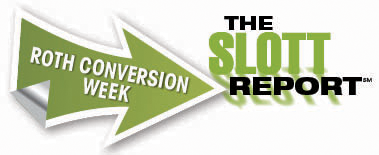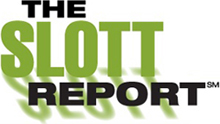 We end Roth Conversion Week with a list you never want to be on. Roth conversions are powerful, tax-free retirement vehicles if handled correctly, but if a mistake is made, you may owe a good portion of your hard-earned savings to taxes and penalties. Here's a list of the Top 10 Roth IRA (and conversion) mistakes you must avoid.
We end Roth Conversion Week with a list you never want to be on. Roth conversions are powerful, tax-free retirement vehicles if handled correctly, but if a mistake is made, you may owe a good portion of your hard-earned savings to taxes and penalties. Here's a list of the Top 10 Roth IRA (and conversion) mistakes you must avoid.
1. Making a contribution when you are not eligible - There are income limits for making a Roth IRA contribution. They are indexed for inflation and can be found in IRS Publication 590 or on our website at www.irahelp.com/2014. You also must have compensation (generally earned income) in order to make a Roth contribution.
2. Contributing more than the annual limit - In 2014, the most you can contribute to a Roth IRA is $5,500 (plus an extra $1,000 if you are age 50 or over during the year). Any amounts you contribute to a traditional IRA will reduce the amount you can contribute to a Roth IRA, dollar-for-dollar.
3. Funds being moved from an IRA to an IRA get put into a Roth IRA instead - This could be due to your own error, your advisor’s error or one made by your IRA custodian. Always follow up to make sure funds land in the right account. On the other hand, since this is technically just an accidental Roth IRA conversion, you can always recharacterize the money back to a traditional IRA by October 15 of the year following the year the mistake occurred - if you have discovered the error. Again, always follow up.
4. Doing a “back-door” Roth conversion and not using the pro-rata rule - When doing a Roth conversion that includes after-tax amounts, you must include the balances in all IRA accounts, not just the account being converted. The pro-rata formula can be found on IRS Form 8606, which must be filed with the account owner’s tax return.
5. Incorrect valuation of assets when doing a Roth conversion - Many tax scams are based on undervaluing assets. This is also true when it comes to Roth IRA conversions. A fair market value must be used for the asset converted. A common example is an annuity contract with riders. Such riders can increase the fair market value of the annuity contract, increasing the tax you will owe if you do a Roth conversion of the IRA annuity.
6. Shifting self-employment or business income into a Roth IRA to avoid income tax - This was a popular “strategy” for several years, which IRS has now made a listed transaction. It generally involves multiple entities and a self-directed Roth IRA. Eventually, earnings accrue to the Roth IRA and are never taxed as income - or at least that’s what a number of taxpayers thought before the IRS and the Tax Court hit them with, in some cases, millions of dollars in penalties and interest.
7. Doing a recharacterization and not reporting the conversion/recharacterization on the tax return - Sometimes people mistakenly believe that since a full recharacterization effectively cancels out a Roth conversion then nothing has to be reported on their tax return. That’s not true. Certain information, such as the gross distribution reported on a 1099-R by a traditional IRA custodian for the conversion, must be reported on your tax return no matter what.
8. Doing a conversion directly from an employer plan to a Roth IRA and not reporting the conversion on the tax return - This is generally an oversight. The 1099-R from the employer plan will have a Code G for a direct rollover to another plan. This is generally a non-taxable event, but not when the assets go to a Roth IRA. CPAs in the midst of tax season may overlook this unless you remember to tell them that your direct rollover was actually a Roth IRA conversion.
9. Beneficiaries of inherited Roth IRAs not taking RMDs - If you have your own Roth IRA account, there are no required distributions during your lifetime. When a non-spouse beneficiary inherits a Roth IRA, however, they do have required distributions beginning in the year after the account owner’s death. The Roth IRA custodian is under no obligation to tell the beneficiary about those distributions or to calculate them.
10. The biggest mistake of all? Not having a Roth IRA in the first place. You are never too old to do a conversion and you are never too young to start contributing to either a Roth IRA or an employer Roth account.
This article is part of Roth Conversion Week at The Slott Report.
Come back all week long for insight and analysis on Roth conversions,
the benefits of tax-free planning, the possible pitfalls involved and
more. Click here to view all articles.
- By Beverly DeVeny and Jared Trexler
The Top 10 Roth Conversion Mistakes
Friday, May 16, 2014
1 comment
Quality content
- Siti Non Aams
- Nuovi Siti Casino
- Casino Non Aams Italia
- Casinos Not On Gamstop
- Casino Sites Not On Gamstop
- Online Casino
- UK Casino Not On Gamstop
- Sites Not On Gamstop
- Casino En Ligne
- Casino En Ligne Fiable
- Casinos Not On Gamstop
- UK Casino Not On Gamstop
- Casino Sites Not On Gamstop
- Non Gamstop Casinos UK
- Casino Online Non Aams
- Casino Not On Gamstop
- Meilleur Casino En Ligne France
- Casino Sites Not On Gamstop
- Non Gamstop Casino Sites UK
- Casino Sites UK Not On Gamstop
- UK Casino Not On Gamstop
- Meilleur Casino En Ligne Fiable
- Casino Online Non Aams
- Casino Non Aams
- Casino Sites Not On Gamstop
- Meilleur Casino En Ligne Belgique
- Lista Casino Online Non Aams
- 안전한 파워볼사이트









1 comments:
When this * (see ...8 below) is done how should this be reported on the 1040?? Is an 8606 necessary??
*...."8. Doing a conversion directly from an employer plan to a Roth IRA and not reporting the conversion on the tax return - This is generally an oversight. The 1099-R from the employer plan will have a Code G for a direct rollover to another plan. This is generally a non-taxable event, but not when the assets go to a Roth IRA. CPAs in the midst of tax season may overlook this unless you remember to tell them that your direct rollover was actually a Roth IRA conversion. - See more at: http://www.theslottreport.com/2014/05/the-top-10-roth-conversion-mistakes.html#sthash.PgmMMydb.dpuf"....
Post a Comment